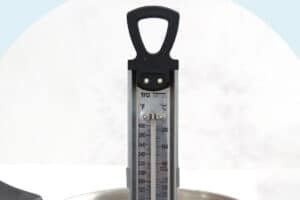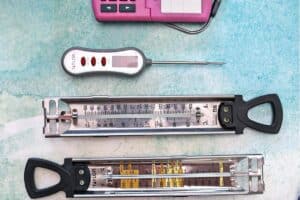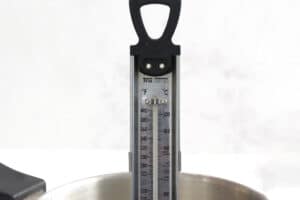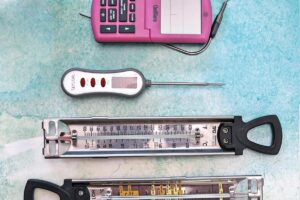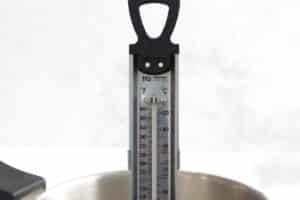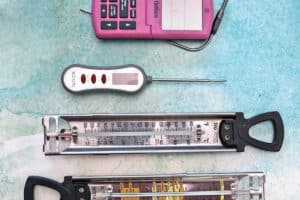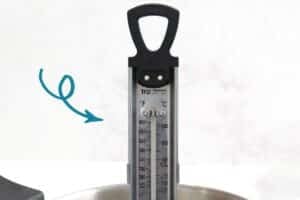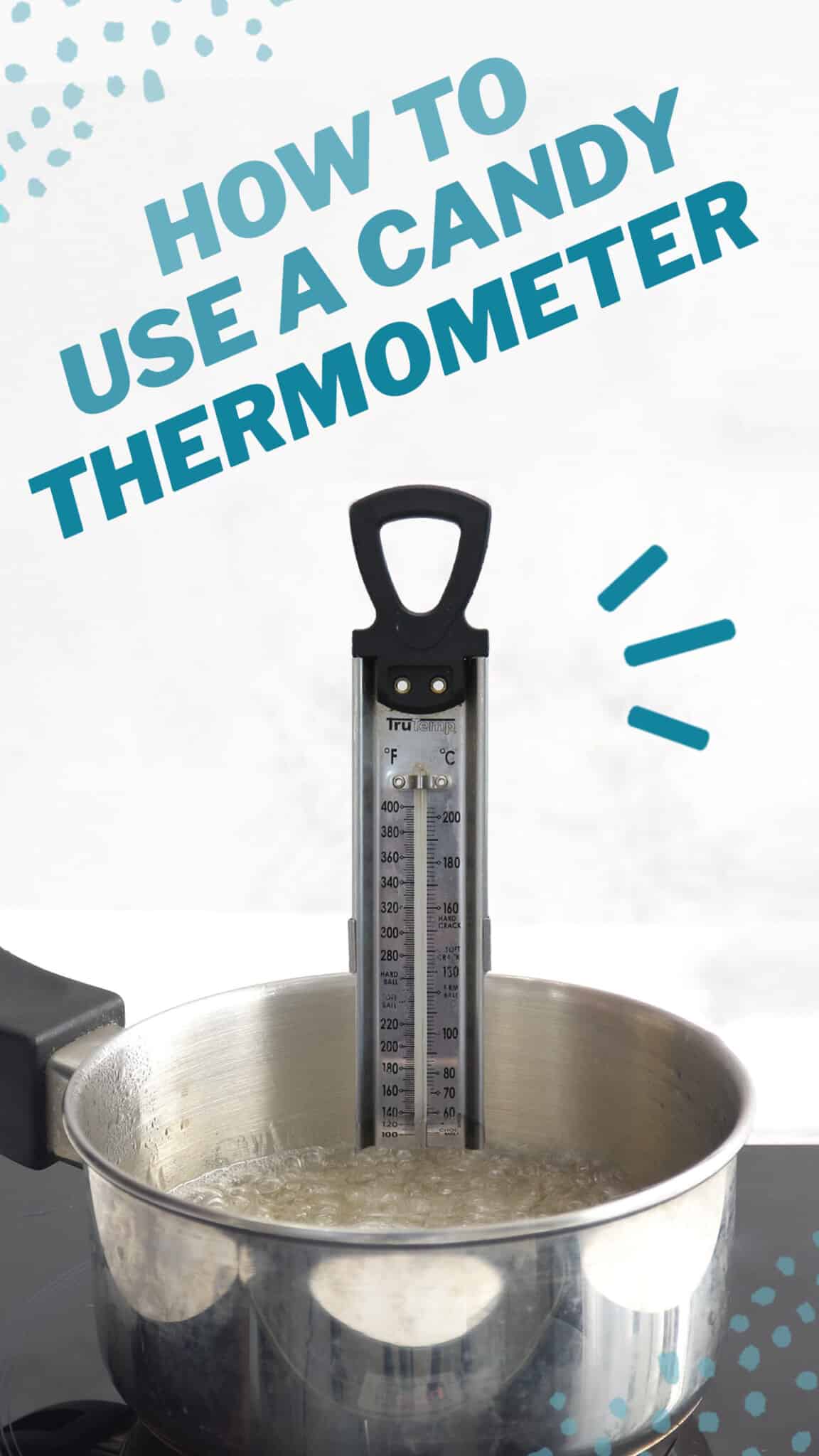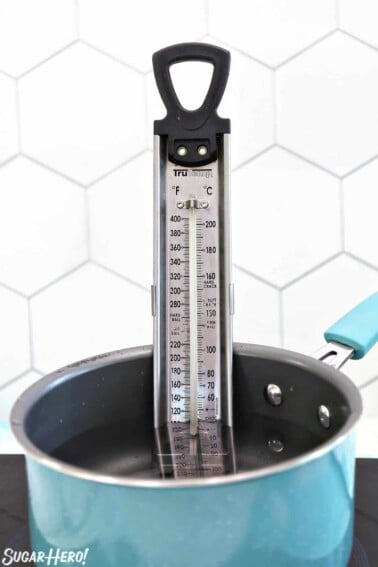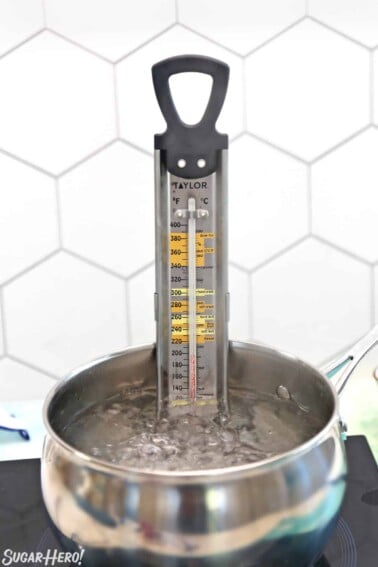Make perfect homemade candy with this step-by-step guide to using a candy thermometer! Our tips and tricks will help you get the most out of your thermometer, and you’ll be making delicious candy in no time.
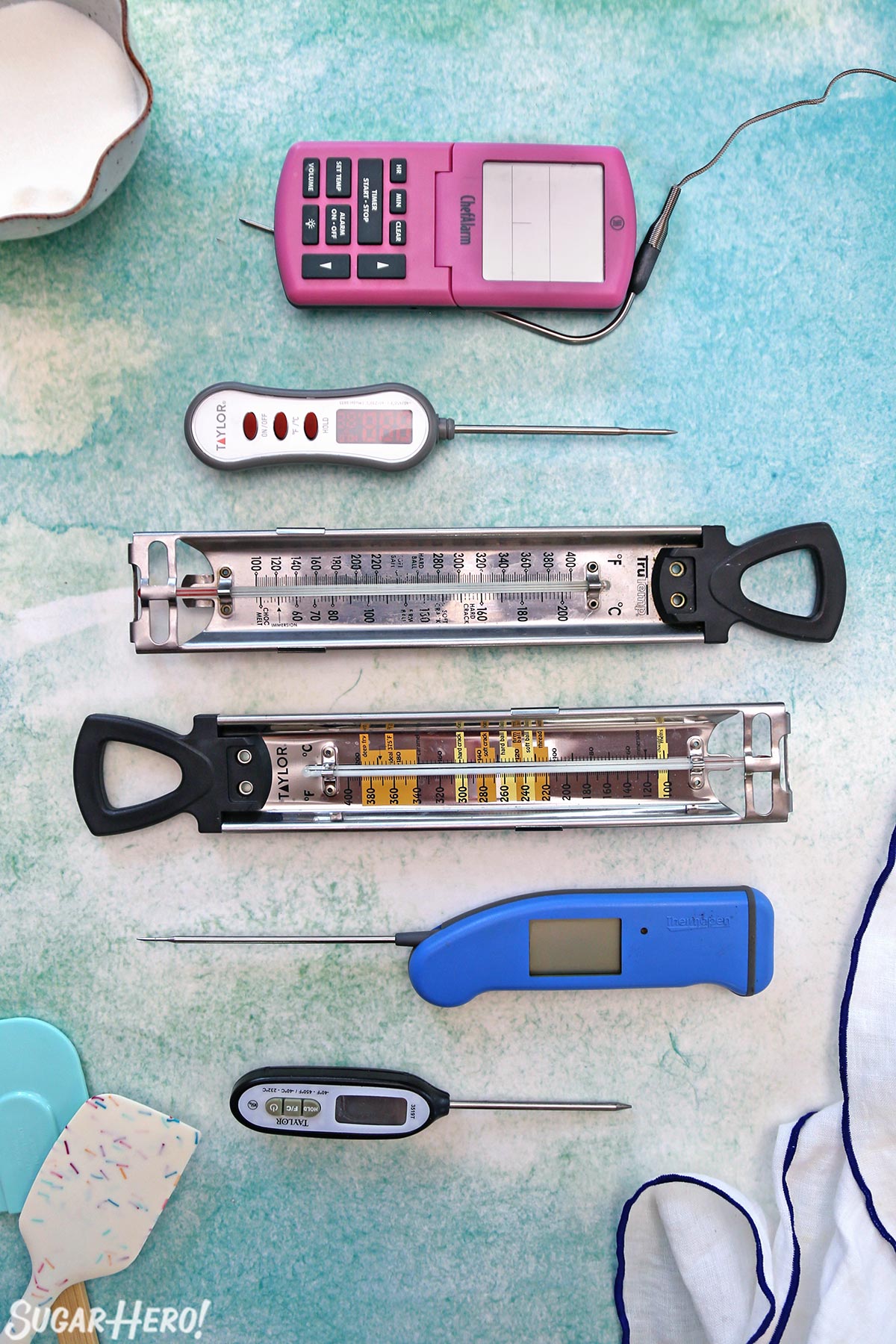
If you’ve ever tried your hand at making homemade candy, and ended up with gooey lollipops or rock-hard caramel, you know that the process of candy-making is sometimes more bitter than sweet. Fortunately, we have a not-so-secret weapon to prevent candy disasters: the candy thermometer.
When it comes to making candy, accuracy and precision are vital – that’s why a candy thermometer is a must-have kitchen tool for anyone who wants to make candy.
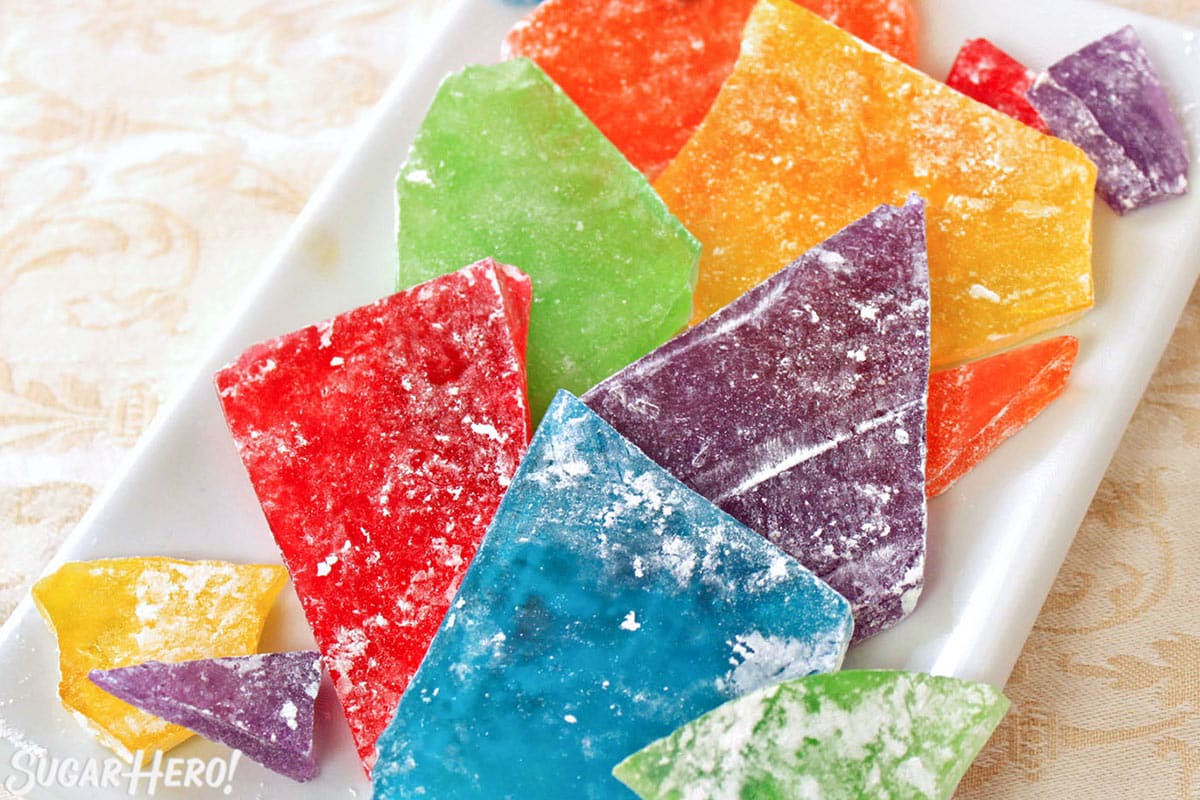
🍬 What is a candy thermometer?
A candy thermometer, sometimes called a “candy/deep fry thermometer,” is a type of thermometer specifically designed to measure high cooking temperatures, like the temperature of boiling sugar.
Many of the most popular homemade candies start by cooking sugar to a high temperature. Caramels, fudge, toffee, taffy, hard candy…even though they’re all very different, they all begin with boiling sugar.
This process of cooking sugar requires accuracy and precision. The difference between a chewy caramel and a brittle one can be just a few degrees, so it is important to accurately measure the temperature of the cooking candy. Candy thermometers take out all the guesswork, ensuring your candy reaches the right temperature, and thus its desired consistency and texture. Occasionally, you’ll want to test and calibrate your thermometer to make sure it’s working at its best capacity.
Table of Contents
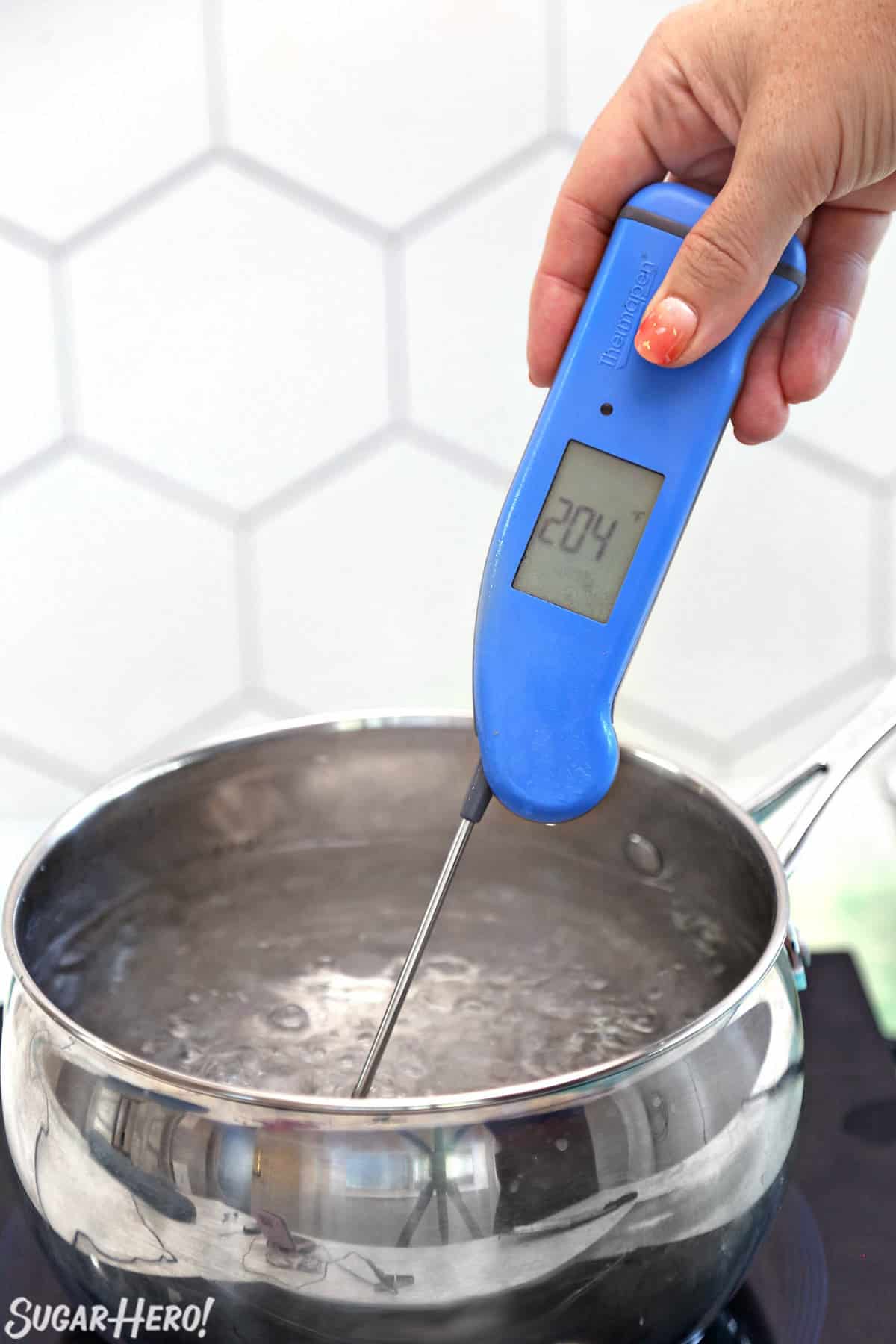
Choosing the right thermometer
From traditional glass tube thermometer to digital ones that beep when the desired temperature is reached, there’s a thermometer for every need and budget. Here are my top thermometer picks:
For beginners who want to try their hand at candy making without breaking the bank, I recommend an inexpensive candy/deep-fry thermometer like this Taylor candy thermometer. It’s priced under $15, can be found in many grocery stores, and it works well for most candy-making needs.
For people who want maximum versatility, I recommend an instant-read probe-style thermometer – my favorite is the Thermapen by Thermoworks (pictured above). This brand makes extremely high-quality, reliable thermometers that are accurate and long-lasting, and can take a measurement in less than one second. This is a versatile choice that works for candy making but also all other kinds of kitchen tasks: it measures from -58.0 to 572.0°F, and the probe style means it also works for taking the temperature of meat, bread, etc.
For people who frequently make candy, I recommend the ChefAlarm by Thermoworks (pictured below). This is the thermometer I personally use most often. You can set a desired minimum or maximum temperature, and the thermometer will alert you when your candy reaches that temperature. Some candy recipes need to cook for an hour or more, and I love that this thermometer continuously monitors the temperature and gives me the flexibility to do other things while my candy is cooking.
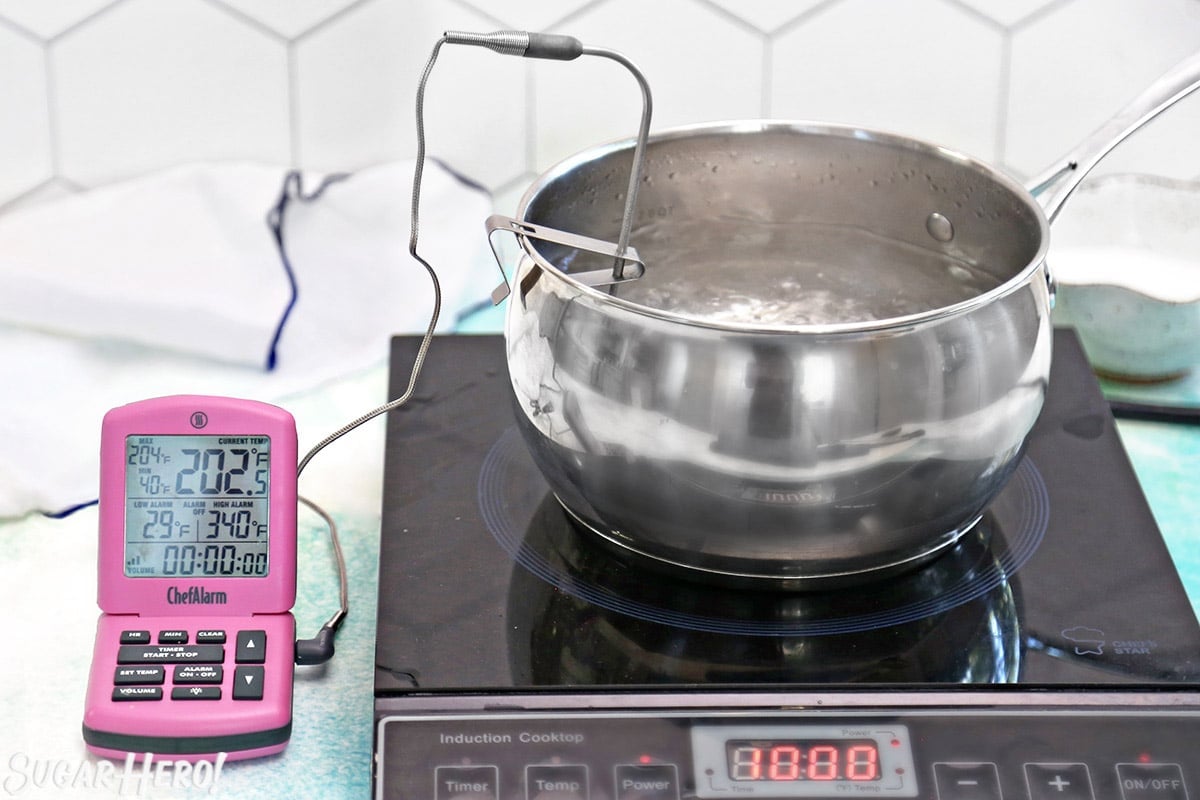
Candy thermometers vs meat thermometers
When shopping for a thermometer, you’ll notice two main types of culinary thermometers: candy/deep-fry thermometers, and meat thermometers. While both are designed to measure the temperature of food, they serve different purposes and are not interchangeable. Here are some of the differences between the two thermometers:
- Temperature Range: A candy thermometer usually has a wider temperature range, often from about 40°F to 400°F (or even higher), ensuring it can track the many stages of sugar cooking. In contrast, meat thermometers might only go up to 200°F because cooked meat has a more limited temperature range.
- Scales: Candy thermometers often include labels like “soft ball” or “hard crack” to indicate sugar syrup stages, while meat thermometers might label “poultry” or “pork” for meat doneness.
- Design: Candy thermometers are often longer to submerge in deep pots of boiling sugar without touching the bottom.
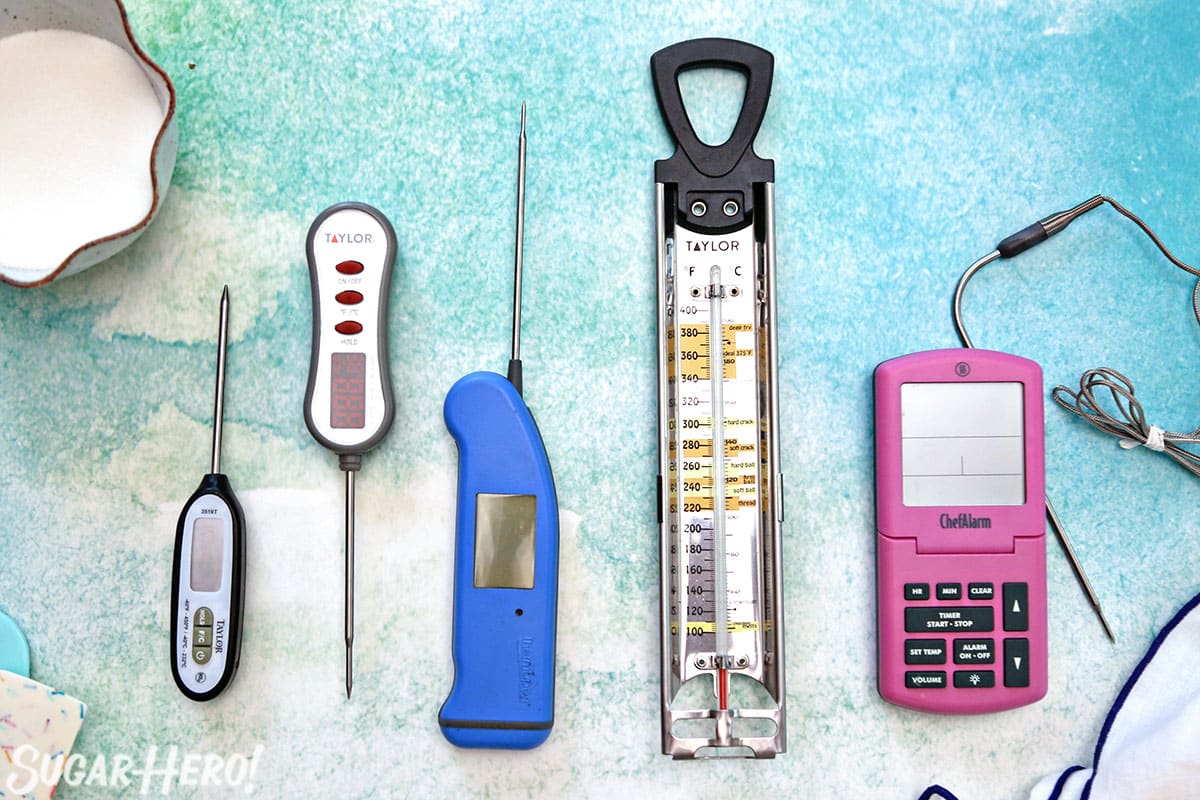
Tips for using a candy thermometer
While you should always follow your specific candy recipe’s instructions, here are some general tips for candy thermometer success:
- Safety: Boiling sugar syrup isn’t just sorta hot, it’s scald-you-and-cause-serious-burns hot. Be careful when handling the thermometer (use oven mitts if you’d like!) and keep a bowl of ice water nearby so you can dunk your hand in case of accidental burns. If you’re using a glass thermometer, avoid drastic temperature changes to prevent the glass from breaking.
- Temperature: As your sugar solution heats, keep an eye on the thermometer. Temperatures can rise swiftly, especially as you approach your target. Pro tip: even after removing your pot from the heat, the temperature will still rise for a short while.
- Placement: Most thermometers come with a clip so you can attach them to the side of the pot (see below). Always ensure the thermometer bulb is placed so it isn’t touching the pot’s bottom, or you’ll get an inaccurate reading.
- Calibration: Before using, check your thermometer’s accuracy by placing it in boiling water. It should read 212°F or 100°C. If not, take the difference into account when reading temperatures.
- Accurate reading: If you are using an old-fashioned mercury thermometer, make sure you are at eye level with the temperature markings so you get an accurate reading.
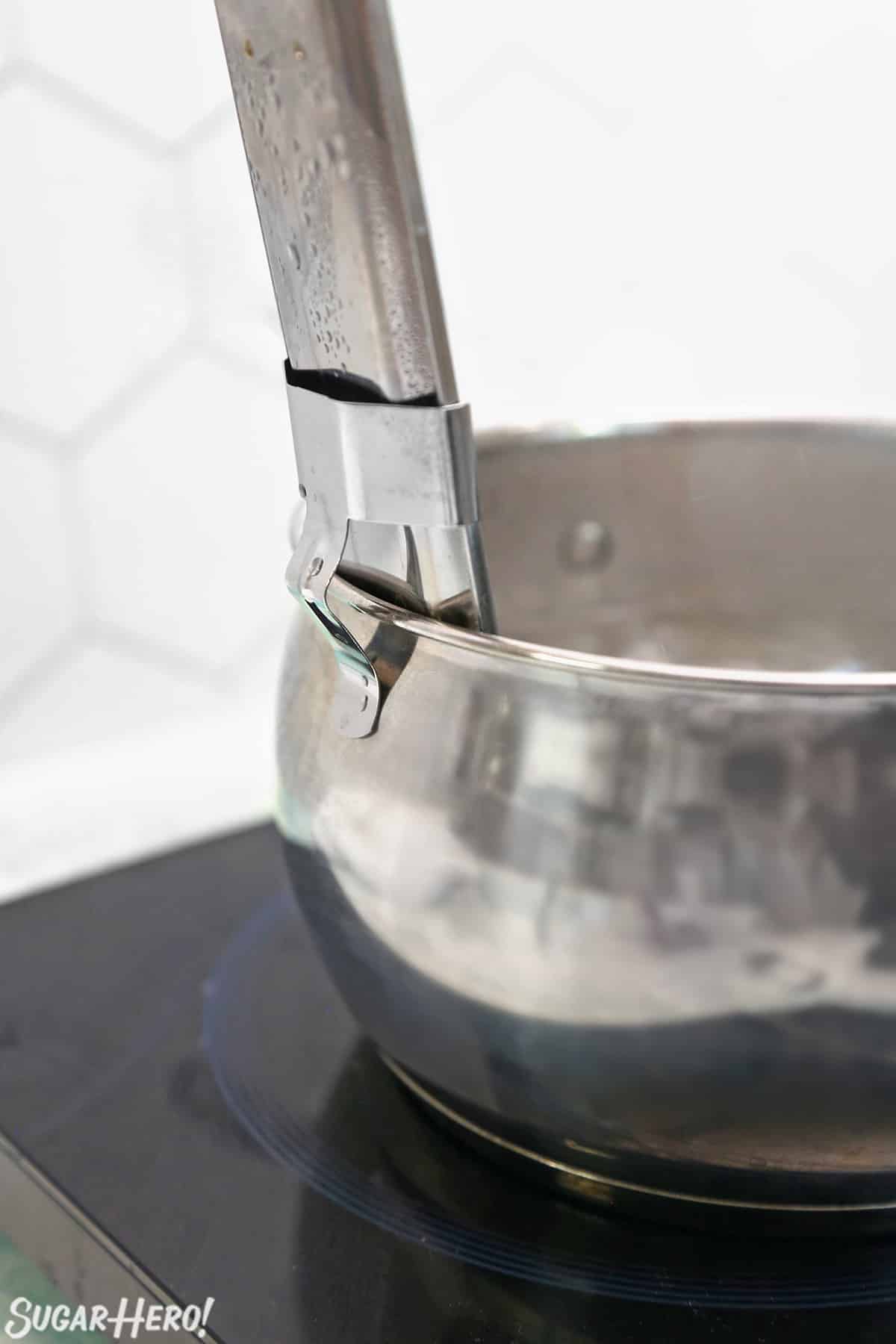
Cleaning your thermometer
Some candy can be difficult to scrub off of a thermometer. Fortunately, there’s a very simple trick to remove sticky candy! Just submerge the thermometer in a pan of water and let it sit. Soon, the water will dissolve the sugar and the thermometer will be clean. If you are using a digital thermometer, just submerge the bulb/probe in water, not the whole thing.
This process is pretty fast, but if you want to speed things up even more, you can put the thermometer in a saucepan of water and bring it to a boil. (Bonus tip: This is also the easiest way to clean off pans that are coated with hard-to-remove candy residue.)
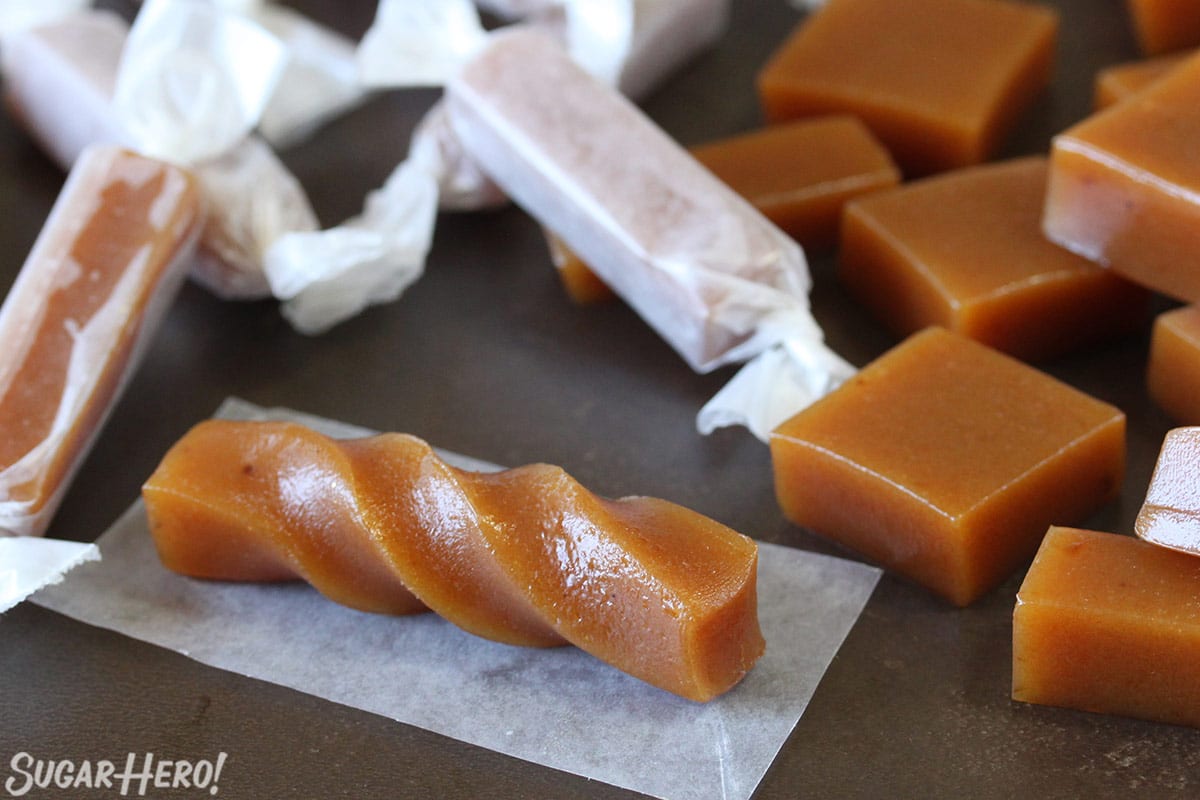
FAQs
While many modern digital probe-style thermometers can be used for both meat and candy, traditional meat-specific thermometers cannot be used to make candy. Their temperature range is too limited and often maxes out around 200° F at the high end. This is much too low to work as a candy thermometer, since many candy recipes need to be cooked above 300° F.
Yes, and actually you should! This allows continuous and consistent temperature monitoring. Additionally, agitating the sugar syrup while it boils (by adding/removing the thermometer) can cause sugar crystals to form.
Candy that is not cooked to a high enough temperature will be softer than desired. This might mean your candy is gooey, doesn’t hold its shape, or is undesirably soft or sticky.
Unfortunately, you can’t cool it down. You might have to start over or repurpose the mixture.
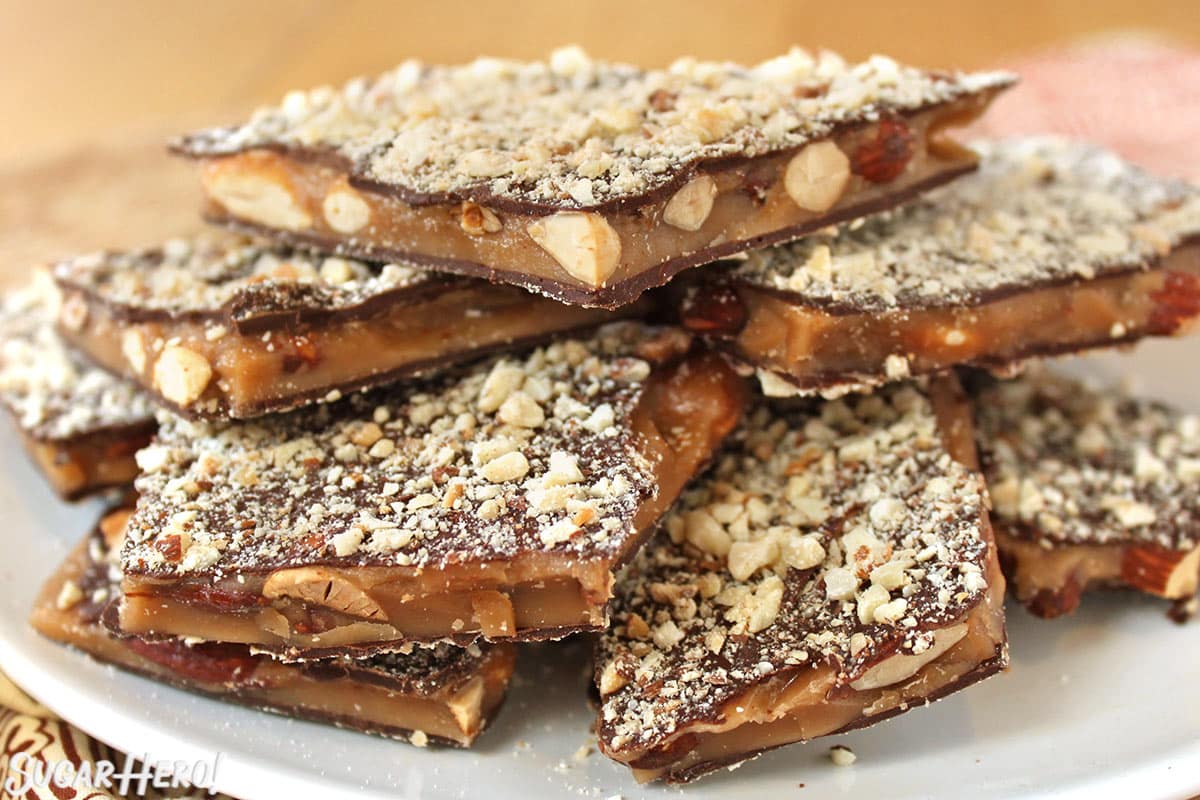
🍭 Candy Recipes
Craving candy now? Try one of these delicious recipes:
